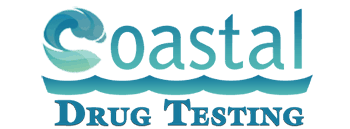 Our local DOT drug and alcohol testing centers are located in Gold Beach OR and the surrounding areas providing DOT drug testing, DOT alcohol testing and DOT physicals for all DOT modes regulated by Part 40. Same day service is available at our Gold Beach OR DOT drug testing facilities and most of our DOT drug testing locations are within minutes of your home or office.
Our local DOT drug and alcohol testing centers are located in Gold Beach OR and the surrounding areas providing DOT drug testing, DOT alcohol testing and DOT physicals for all DOT modes regulated by Part 40. Same day service is available at our Gold Beach OR DOT drug testing facilities and most of our DOT drug testing locations are within minutes of your home or office.
What type of DOT Testing is required?
Coastal Drug Testing provides DOT pre-employment, random, post-accident, reasonable suspicion and return to duty testing at our Gold Beach OR DOT drug testing centers.
If you hold a CDL license, a large, medium or a small trucking company, Coastal Drug Testing has a complete DOT compliance package which includes all the requirements to comply with CFR 49 part 40.
All Coastal Drug Testing DOT drug testing centers utilize SAMHSA Certified laboratories and a licensed Medical Review Officer as required by DOT part 40 regulations.
The U.S Department of Transportation (DOT) requires that all DOT regulated "safety sensitive" employees have a negative DOT pre-employment drug test result on file and be actively enrolled in a DOT approved random drug and alcohol random testing pool (consortium).
In addition, if a DOT regulated company has more than one "safety sensitive" employee, the employer must also have a written DOT drug and alcohol policy along with an on-site supervisor that must have completed a reasonable suspicion supervisor training program.
On the road and need a DOT Drug or Alcohol test? No Worries!
To be compliant with DOT regulations, a company's DOT drug and alcohol testing program must have the following components:
- Employee Drug Testing
- Written Drug and Alcohol Policy
- Supervisor Training
- Substance Abuse Referral
- Employee Education
- Random Selection Program
- Post Accident Testing
- Designated Employer Representative
- Federal Chain of Custody Forms
- Part 40 Regulations on File
The Department of Transportation (DOT) has specific drug and alcohol testing requirements for the all transportation modes all DOT agencies.
Our modes included are:
- Federal Motor Carrier Safety Administration (FMCSA)
- Federal Aviation Administration (FAA)
- Federal Transit Administration (FTA)
- United States Coast Guard (USCG)
- Pipeline and Hazardous Materials Safety Administration (PHMSA)
- Federal Railroad Administration (FRA)
Are You Enrolled in a DOT Consortium?
Individuals who are employed in a position designated as "safety sensitive" must be actively enrolled in a random drug and alcohol testing program. Oftentimes, covered employees will join a group of other DOT regulated employees in a random testing program and this is referred to as a DOT Consortium. Generally, an employer who has less than fifty employees or single operators will join the consortium which will comply with the random drug and alcohol testing requirements of 49 CFR Part 40. Employers that have over 50 employees who are regulated by Part 40 may elect to be enrolled in a "stand alone" random testing pool.
The DOT consortium is cost effective and complies with all requirements of 49 CFR Part 40 which mandates that all "safety sensitive" employees be enrolled in a random drug and alcohol testing program.
The Department of Transportation (DOT) has strict regulations requiring regulated companies and independent operators (CDL License Holders) to be an active member of a DOT drug and alcohol Consortium and failure to comply with these regulations can result in significant fines and other DOT sanctions.
We are fully versed in the DOT procedures for pre-employment drug testing, random drug testing, reasonable suspicion drug testing, post-accident drug testing, return to duty drug testing and follow up drug testing.
DOT regulated companies with multiple safety sensitive employees must also have an employee within the company who is assigned as the "designated employer representative" (DER). This is the person responsible for removing any DOT "safety sensitive" employee who is covered by 49 CFR Part 40 from performing a DOT safety sensitive position when a positive drug or alcohol test result has occurred or an employee has refused to take a required DOT test.
If you have recently become a DOT regulated company, within the next 18 months the Department of Transportation (DOT) will conduct a "new entrant" inspection to ensure that you are in compliance with all DOT regulations including the drug and alcohol testing requirements. If you are currently a DOT regulated company, you are subject to regular inspections to ensure compliance.
Avoid DOT fines, penalties and be complaint with all DOT drug and alcohol testing regulations! Coastal Drug Testing can assist small, medium and large DOT companies in complying with all requirements of 49 CFR Part 40.
DOT Drug Testing Locations in Gold Beach OR
94220 4TH ST 0.3 miles
GOLD BEACH, OR 97444
(Don't see a location near you? Call us (800) 828-7086)
Local Area Info: Gold Beach
Gold, commonly known as Gold Beach, was the code name for one of the five areas of the Allied invasion of German-occupied France in the Normandy landings on 6 June 1944, during the Second World War. Gold, the central of the five areas, was located between Port-en-Bessin on the west and La Rivière on the east. High cliffs at the western end of the zone meant that the landings took place on the flat section between Le Hamel and La Rivière, in the sectors code-named Jig and King. Taking Gold was to be the responsibility of the British Army, with sea transport, mine sweeping, and a naval bombardment force provided by the Royal Navy as well as elements from the Dutch, Polish and other Allied navies.
The objectives at Gold were to secure a beachhead, move west to capture Arromanches and establish contact with the American forces at Omaha, capture Bayeux and the small port at Port-en-Bessin, and to link up with the Canadian forces at Juno to the east. Forces attacking Gold faced elements of the German 352nd Infantry Division and German 716th Infantry Division. About 2,000 men were stationed in the immediate area. Improvements to fortifications along the Normandy coast had been undertaken under the leadership of Generalfeldmarschall Erwin Rommel beginning in October 1943.
On D-Day at Gold, naval bombardment got underway at 05:30, and amphibious landings commenced at 07:25. High winds made conditions difficult for the landing craft, and the amphibious DD tanks were released close to shore or directly on the beach instead of further out as planned. Three of the four guns in a large emplacement at the Longues-sur-Mer battery were disabled by direct hits from the cruisers Ajax and Argonaut at 06:20. The fourth gun resumed firing intermittently in the afternoon, and its garrison surrendered on 7 June. Aerial attacks had failed to hit the Le Hamel strongpoint, which had its embrasure facing east to provide enfilade fire along the beach and had a thick concrete wall on the seaward side. Its 75 mm gun continued to do damage until 16:00, when a modified Armoured Vehicle Royal Engineers (AVRE) tank fired a large Petard bomb into its rear entrance. A second casemated emplacement at La Rivière containing an 88 mm gun was neutralised by a tank at 07:30.
